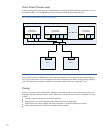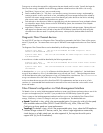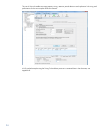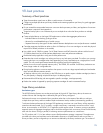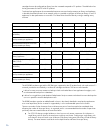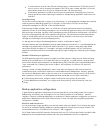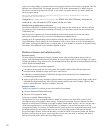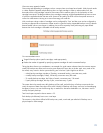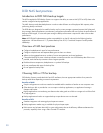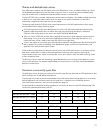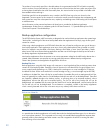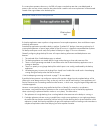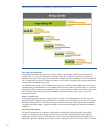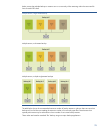
28
Some minor setting changes to upstream infrastructure might be required to allow backups with greater than 256
KB block size to be performed. For example, Microsoft’s iSCSI initiator implementation, by default, does not
allow block sizes that are greater than 256 KB. To use a block size greater than this you need to modify the
following registry setting:
HKEY_LOCAL_MACHINE\SYSTEM\CurrentControlSet\Control\Class\{4D36E97B-E325-11CE-BFC1-
08002BE10318}\0000\Parameters
Change the REG_DWORD MaxTransferLength to “80000” hex (524,288 bytes), and restart the
media server – this will restart the iSCSI initiator with the new value.
Disable backup application verify pass
Most backup applications will default to performing a verify operation after a backup job. Whilst this offers a
very good way to ensure that data is backed up successfully it will also heavily impact the performance of the
whole backup job.
Performing a verify operation will more than double the overall backup time due to the fact that restore
performance (required for verify) is slower for inline deduplication-enabled devices.
Disabling verify for selected backup jobs can be done relatively safely as D2D Backup Systems perform CRC
(Cyclic Redundancy Check) checking for every backed-up chunk to ensure that no errors are introduced by the
D2D system. Verifying some backup jobs on a regular basis is recommended. For example, verifying the weekly
full backups where additional time is available might be an option.
Rotation schemes and retention policy
Retention policy
The most important consideration is the type of backup rotation scheme and associated retention policy to
employ. With data deduplication there is little penalty for using a large number of virtual cartridges in a rotation
scheme and therefore a long retention policy for cartridges because most data will be the same between backups
and will therefore be deduplicated.
A long retention policy has the following benefits:
It provides a more granular set of recovery points with a greater likelihood that a file that needs to be
recovered will be available for longer and in many more versions.
It reduces the overwrite frequency of full backup cartridge which reduces the amount of deduplication
housekeeping overhead required.
When using the D2D to copy cartridges to physical media a long retention policy ensures longer validity of the
offloaded cartridges because they inherit the same retention period as the virtual cartridge. Therefore, their
ability to restore data from a physical cartridge is improved.
Rotation scheme
There are two aspects to a rotation scheme which need to be considered:
Full versus Incremental/Differential backups
Overwrite versus Append of media
Full versus Incremental/Differential backups
The requirement for full or incremental backups is based on two factors, how often offsite copies of virtual
cartridges are required and speed of data recovery. If regular physical media copies are required, the best
approach is that these are full backups on a single cartridge. Speed of data recovery is less of a concern with a
virtual library appliance than it is with physical media. For example, if a server fails and needs to be fully
recovered from backup, this recovery will require the last full backup plus every incremental backup since (or the
last differential backup). With physical tape it can be a time consuming process to find and load multiple
physical cartridges, however, with virtual tape there is no need to find all of the pieces of media and, because
the data is stored on disk, the time to restore single files is lower due to the ability to randomly seek within a
backup more quickly and to load a second cartridge instantly.



